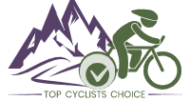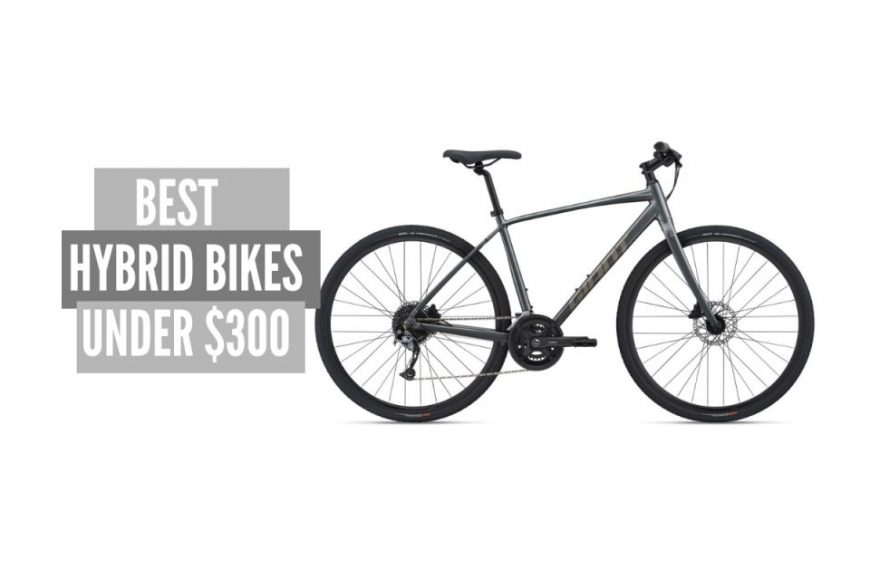Best Road Bike Computers
We’ve compiled a list of the best road bike computers available so you can improve your ride by tracking your whereabouts, when it happened, and how fast you were going.
The greatest cycling computers can provide you with a wealth of information to monitor your performance and ride. But not all units are made equally. What cycling computer do you think is best for you?
To help you get the most out of your ride, the best road bike computers can give navigation, monitor performance, and link to other devices.
Read on for our selection of the top cycling computers we’ve tested, along with links to additional in-depth evaluations, if you want more information on what to look for in a cycling computer and recommended alternatives.
Our invested efforts in this article are:

Numerous Bicycles Assessed

Heaps Articles Reviewed

Long Hours Research

Maximum Reviews Analyzed
What we look in products in greater detail are:

Customer Service

Effectiveness

Price

Ease of Use
Table of Content
We’re listing some of our favorite Best BMX pegs and explaining why you should consider them for your bike based on our experience.
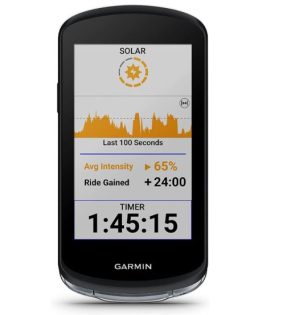
The Edge 1040 Solar can be charged using the sun, which is certainly a draw. According to Garmin, the Power GlassTM solar charging system increases battery life in energy saver mode by up to 42 minutes each hour, giving you up to 45 hours of battery life for “demanding use cases” and up to 100 hours overall.
The fact that this is predicated on the assumption of constant 75,000 lux levels throughout daylight rides is irrelevant. That basically implies that there is constant, brilliant sunshine, which you may certainly appreciate during summer rides but may not have as much of during the cooler months, depending on where you reside. Naturally, the level of cloud cover should meet your expectations.
The user interface for the Garmin Edge 1040 Solar has also been updated, and we found it to be much simpler to operate than on other Garmin models. You may skim through your recent activity history, training schedule, weather prediction, and more on the home page thanks to customizable data fields. The “glances” feature also allows you to view information like your recovery time.
The Power Guide is another intriguing feature; it creates a pace plan for the route you choose to assist you manage your efforts. All this technology is obviously expensive, but if you’re looking for a cycling computer that can handle it all, you won’t likely be let down.
Specifications:
Dimensions : 2.3″ x 4.6″ x 0.8″ (59.3 x 117.6 x 20.0 mm)
Touch screen: Yes
Color display: Yes
Display size: 3.5″ (88.9 mm) diagonal
Weight : 4.7 oz (133 g)
Battery life: Up to 45 hours
Great GPS Accuracy
Solar Charge
Excellent GUI
Smart Pacing Features
Slightly expensive
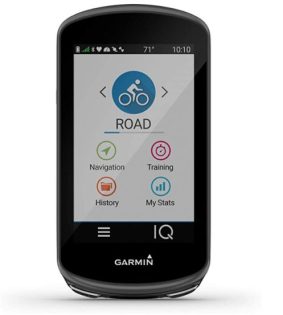
The 1030 Plus is substantial in both size and feature set. Its 3.5-inch display is both big and clear, making the on-device maps and data fields incredibly easy to see. Its exterior measurements are 4.5 inches tall, 2.3 inches wide, and 0.8 inches thick.
The Garmin 1030 Plus provides all the features you’d want in a high-end cycling computer, including navigation, training data, networking to external sensors and applications, access to the Connect IQ appstore, and much more. It can show all the metrics you may ever require. It supports WiFi for fast uploads to third-party programs like Strava as well as ANT+ and Bluetooth for connecting to sensors, smartphones, and Garmin wearables.
Specifications:
Dimensions: 58mm x 114mm x 19mm
Touchscreen: Yes
Color display: Yes
Display size: 3.5in (88.9mm)
Weight: 124g
Battery life: 24 hours
Features : Power, dynamic performance monitoring, sync training plans, lights, Live tracking, bike alarm, + many many more
Great Battery life
Best in features
Good touchscreen
Slick Setup
Slightly expensive
Bit heavy
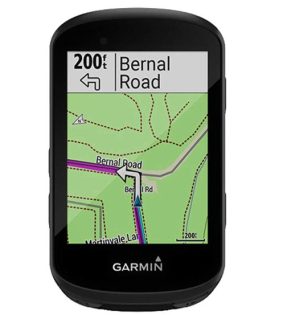
The 530 is the brand’s best option if you’re sold on Garmin cycle computers but prefer the tactile feel of button presses; it delivers the same feature set as the 830 and 1030 Plus but saves some money by skipping the touchscreen technology.
It costs about the same as the Wahoo Elemnt Bolt, which has a little smaller but higher resolution screen, but practically all settings on the Edge 530 can be accessed directly on the device itself, unlike the Bolt, which depends entirely on the companion app. A somewhat larger screen does make it a little bit easier to find where you’re heading while riding, but like the Bolt, the lack of a touchscreen does make for laborious map browsing.
Whether on a road or a trail, the Edge 530’s pre-installed Trail Forks and Garmin Cycle Maps can assist you in finding your way. The Garmin Connect IQ store is also accessible to the Edge 530, allowing you to add applications like Komoot, download data fields, and import workouts from TrainerRoad or Training Peaks.
Specifications:
Dimensions : 1.9″ x 3.2″ x 0.8″ (50 x 82 x 20 mm)
Touchscreen: No
Color display: Yes
Display size: 2.6″
Weight : 75.8 g
Battery life: Up to 20 hours (claimed)
Features: Power, sync training plans, lights, Live tracking, bike alarm, + more
Customizable
Intuitive to use
New performance matrices
Faster processor
Not easy to setup
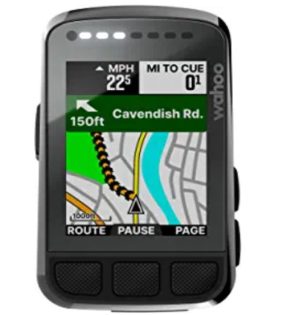
What we know and love about the Elemnt Bolt is now available in a little larger format with the Wahoo Elemnt Roam. The Roam offers all the essential features, including phone communication alerts, live tracking, and structured training, to name just a few, in terms of functionality and compatibility.
It is the most competitive alternative to the more expensive Garmin Edge 830, but it lacks a touchscreen, which may be an advantage for certain cyclists who cycle in inclement conditions and find this feature to be less than ideal. The unit’s three primary control buttons are strategically placed at the bottom of the device’s face; they are larger and simpler to use than the numerous bicycle GPSs’ small side-mounted buttons.
The battery lasts a few hours longer than the Bolt, albeit not as long as some of the other computers advertise.
Specifications:
Dimensions : 3.5″x2.3″x0.7″ (89mmx54.4mmx17.8mm)
Touch screen: No
Colour display: Yes
Display size: 2.7″ (68.6mm
Weight : 93.5g
Battery life: Up to 17hrs
Features: Integrates with smartphone app for turn-by-turn navigation, Bluetooth communication for text/call alerts, speed/distance/time/elevation, structured training
Easy to operate
Value for money
Great features
Great for off road adventures
Some may find low battery life
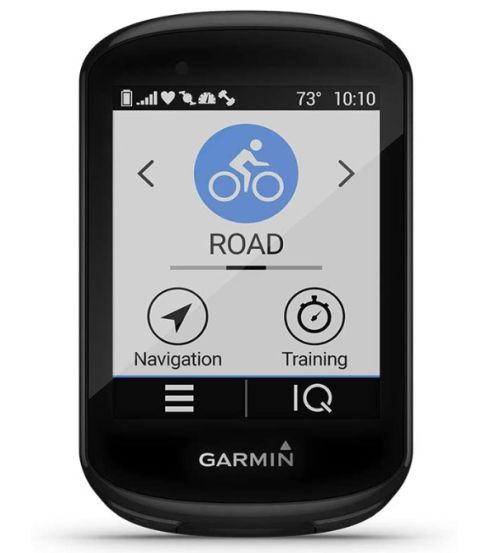
The Garmin Edge 830 provides the same abundance of mapping and training stats as the Edge 1030 Plus, but in a more compact and affordable package that will appeal to more people.
The smaller size entails a smaller 2.6-inch display, which in our opinion is still adequate for daily use, and a smaller battery, which we discovered to last about 18 hours before needing to be recharged. Naturally, the reduced size also results in a 42g weight reduction and, arguably the most desirable change, a lower price.
The Edge 830 can track everything from your speed, time, and distance to more intricate metrics like mountain bike grit and flow because it has access to the GPS, Glonass, and Galileo satellite networks as well as a vast array of built-in metrics.
It connects to smartphones and other apps using the Garmin Connect app, like other Garmin devices, and despite some initial issues, it got better as the flaws were fixed. Additionally, it means that it can simply connect to your Garmin watches, Varia radar, lights, and other Garmin devices because there is a complete Garmin eco-system for it to fit into. During our evaluation, we discovered that it connected with other branded products, including a variety of HR straps and electronic drivetrains, Wahoo’s smart trainers, Quarq, and Stages power meters, with ease.
Specifications:
Dimension : 1.9” x 3.2” x 0.8” (50 mm x 82 mm x 20 mm)
Touchscreen: Yes
Color display: Yes
Display size : 2.6″
Weight: 79.1 g (claimed)
Battery life: Up to 20 hours GPS training mode (claimed)
Features: Power, dynamic performance monitoring, sync training plans, lights, Live tracking, bike alarm, + many more
Easy to Install
2.6in touchscreen
Fast processor
Value for money
Useful size
Some may find bugs in software
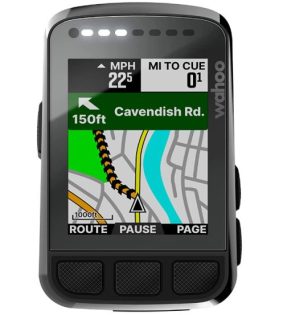
With the inclusion of a sharper display with more colours, a USB-C charging connector, more tactile buttons, and more memory, the Wahoo Elemnt Bolt combined all the positive aspects of the larger Elemnt Roam V1 into a smaller, aerodynamic design.
The entire ease of use is unmatched by other brands because setup and the majority of modifications are carried out using a companion app. It works perfectly, however it’s important to note that switching data fields mid-ride requires pulling out your phone rather than using the press-hold-change feature offered by Hammerhead and Garmin.
With its 64-color display, the Bolt’s maps are among the clearest and most concise in terms of exactly what is displayed, only surpassed by Hammerhead in our experience. However, the 2.2-inch screen is a bit too small, so serial navigators will be better off looking elsewhere. Connectivity to the Wahoo app and third-party navigation tools like Strava, Komoot, and RideWithGPS is seamless.
The Elemnt Bolt has compatibility for ANT+, Bluetooth, WiFi, and pretty much all the training metrics you’re likely to need. When it detects a WiFi signal, it will effortlessly sync your preferred third-party apps, making downloading routes and workouts and uploading rides as simple as it gets.
Specifications:
Dimensions: 3.05″ x 1.86″ x .84″
Touchscreen : No
Color display : Yes
Display size: 2.2 in
Weight : 2.4oz / 68.38 g
Battery life: 15 Hours Features: Power, GPS Navigation, Call/ text/ email, 15 county maps, SoS, Workouts
Aerodynamic design
Works well and durable
Value for money
Strava Live enabled
Screen easy to read
Aerodynamic design
No touchscreen
Cannot see the LEDs in sunlight
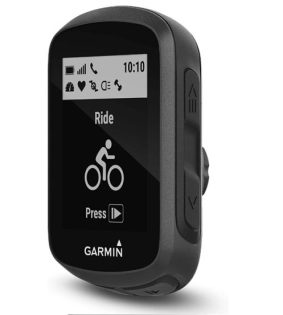
We are aware that our buying guide resembles a list of the top Garmin cycling computers, but that only serves to highlight the company’s dominance in the market. The Garmin Edge 130 Plus is no exception, having won a Cycling Weekly Editor’s Choice Award.
The Edge 130 Plus is a minimalistic, straightforward riding computer that is quite functional. It is simple to set up and updating data fields is simple to do, even on the fly, because buttons are used in place of a touchscreen.
It can pair with Bluetooth and ANT+ accessories including power metres, cadence sensors, and heart rate monitors. It is a gadget for individuals who wish to practise, improve their performance, and chase Strava Live segments but don’t require the high-end capabilities available at higher pricing.
Specifications:
Dimensions : 4.1 x 6.3 x 1.6 cm
Touchscreen : No
Color display: No
Display size : 27.0 x 36.0 mm; 1.8″ diag (45 mm)
Weight: 33 g
Battery life: Up to 12 hours (claimed)
Features: Power, lights, live track, GPS, navigation, text messages
Small size and looks great
Operate via buttons
The accelerometer allows for MTB metrics
Varia compatible
Easy-to-read screen
Black and white mapping
Lacking advanced power metrics

The Mega XL stands out among Lezyne’s selection of GPS-enabled bike computers as being the brand’s newest, largest, and best model. It shares many characteristics with its smaller brothers but distinguishes itself with a huge battery life claim of up to 48 hours, a sizable, readily legible display that can be used in either portrait or landscape configuration, and offline navigation and maps. It has too many features to list them all, but its lengthy battery life sets it apart from the competition. See how it compares by reading on.
The Mega XL is ideal for cyclists who love data since it has the info you want and displays it in the best way possible on a large 2.7′′ 240400 high-resolution screen.
The Mega XL can display data from power metres, heart rate monitors, speed/cadence sensors, and compatible electronic drivetrains while simultaneously pairing with Bluetooth Smart and ANT+ devices.
For more personalisation and functionality, the Mega XL may also be connected to Lezyne’s Smart Connect LED system and the Lezyne Ally smartphone app.
Aside from having a lot of incredibly helpful features like a barometer and accelerometer, trainer mode, numerous bike profiles, navigation, route creation, personalized alarms, and auto settings, this cycle computer is tough thanks to its weather-resistant casing.
Reasonably priced
Great companion app
Offline maps and navigation
Long battery life
Can be used in landscape or portrait orientation
No preloaded maps
Bit heavy
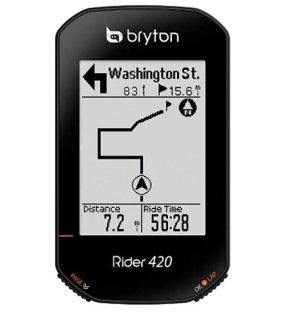
Bryton bike computers don’t have the best user interfaces on the market and have a bit of a learning curve, but once you get used to them, they give considerable value for your money.
You can build your own route and sync it to your device using a companion app for breadcrumb-style routeing. There are 77 functionalities, ANT+ and Bluetooth sensor support, and a battery life of 35 hours, according to the manufacturer.
The Rider 420 also enables auto-sync to third-party training software, the direct export of workouts from TrainingPeaks through the device, and the configuration of the screens and data fields via the companion smartphone app.
The Rider 420 might not be the ideal choice for you if you frequently follow routes, but if you’re looking for a lot of features at a low cost, look no further.
Specifications:
Dimensions : 9.4 x 9.4 x 4.57 cm
Touchscreen: No
Colour display: No
Display size : 2.3″ /5.8cm
Weight : 227g
Battery life: 35-hours 12-14hrs riding
Features : Power, GPS Navigation, text alert,
Amazing Battery life
Easy to set up
Easy to use
Value for money
User interface isn’t always intuitive
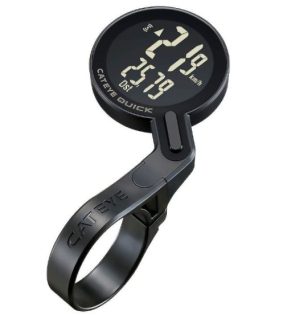
In terms of speed and distance accuracy, Cateye Quick was a digit for digit match for the more potent unit. Not bad for such a basic and, in the grand scheme of things, inexpensive equipment.
The out front location places it perfectly in the field of view and makes it simple to read quickly. Additionally, the battery life is measured in years rather than hours as it is with all of Cateye’s basic computers.
Functionality is constrained by the wonderful simplicity. Beyond the wireless speed transmitter, there is no compatibility, and as there is no GPS chip on board, there is no way to keep track of your travels. However, if you want a sleek and basic cycling computer and don’t want linked features, the Cateye Quick is accurate, reliable, and best of all looks really cool.
Specifications:
Dimensions: 93.5 X 54 X 36mm
Touchscreen: No
Color display: No
Display size: Not specified
Weight: 24g
Battery life: Approx. 1 yr (based on one hour a day use)
Features : Tracks distance, speed, elevation, pace indicator and time
Elegant design
Easy to use
Easy to install
Value for money
No GPS tracking
Best Road Bike Computers Buyers Guide
There are two key things to think about if you’re thinking about buying a new bike computer: First, how much money do you have to spend, and second, do you anticipate doing a lot of navigating on your computer?
If you don’t frequently use the map features on your computer, you might be able to save some money by purchasing a device that focuses more on providing essential information like ride time, speed, distance, averages, etc. while also having the ability to pair with devices like HR monitors and power meters.
You may need a computer with a larger capacity for more maps, more built-in GPS and navigational aids, and the ability to connect with other route planning programs if you plan to conduct a lot of navigating and route following on it.
What features can we expect from an entry level non-GPS cycling computer?
Typically, the most affordable cycle computers start at approximately the price of a takeout meal (or even cheaper if you do a bit of shopping around). Of all, you can’t expect a computer this expensive to have a ton of features.
The cheapest bike computers will gather this data from speed and cadence sensors mounted on the bike frame, to which they are wired, and use it to calculate basic metrics like your speed and cadence (and, from these, things like your average speed and average cadence).
You can upgrade to a wireless cycle computer by paying a little bit more, and it will link to your speed and cadence sensors without the need for unsightly cables to run all over your frame. If you’re on a tight budget and don’t care about uploading your rides to Strava or engaging in any real, planned training, these types of computers are probably your best bet.
Although generally speaking, unless you get one of a deal, it’s unlikely that these models will go quite as far as having a genuine GPS capable unit, just under a triple figure price tag will give you even more choice cycling computers-wise and they will begin to offer more capability.
What characteristics might we anticipate from budget GPS cycling computers?
With an entry-level GPS device, you can easily start tracking your rides and using additional functions. The price may increase slightly if you discover a bundle with a heart rate monitor and/or cadence sensor, but it will still be less expensive than purchasing the components separately.
Manufacturers emphasise simplicity of use, compactness, and light weight at this pricing category, which is often considerably below 3.5 oz/100g.
Your ride’s distance, time, speed, and lap times will normally be tracked by the GPS device, but it won’t offer navigation. Most systems provide ANT+ connectivity for external sensors and will automatically pause when you stop moving and resume when you do.
Typically, ride data is shown on a black and white screen in two or three rows. One of the selling advantages of these devices is that you can turn them on and start cycling without needing to go into complicated configuration settings, thus personalisation tends not to be a priority. However, there may be the opportunity to define which data elements and how many rows are presented.
The GPS might also let you set alerts for when you’ve accomplished a goal, like riding for a predetermined amount of time. You can purchase virtual competitor features to compare your performance to that of earlier riders who took the same route.
Battery Life on GPS Road Bike computers?
Do you like taking long bike rides for hours at a time through various regions of the nation?
You’re not the only one, after all. Now, tracking your data while you travel might be a lot of fun, but you might be concerned about battery life. But you’re in luck.
Different varieties of bike computers exist, but in terms of battery life, they are all very comparable. On the other hand, there is a significant difference between battery life between cellphones and cycle computers, with a cycling computer coming out on top.
Many computers advertise a battery life of 15 to 20 hours, though this can vary in specific circumstances. However, if you’re out for a particularly long time, external battery expanders can extend the life of your cycle computer’s battery so you won’t have to worry about your power meter expiring in the middle of a ride.
What Are ANT+ And Bluetooth?
ANT+ is a wireless technology that is frequently used to track sensor data in real-time or at predetermined intervals. It can be used to track heart rate during sports or tyre pressure, for example.
Bluetooth – Bluetooth is a wireless technology that enables the transfer of data over a short distance between various devices.
One way that ANT+ and Bluetooth are different from one another is that ANT+ allows for multiple-to-many connections while Bluetooth only allows for one-to-one connections.
Although many cycling computers now support both ANT+ and Bluetooth sensors, others still only support one or the other, so make sure to verify before you buy.
What do we expect from mid range GPS Road Bike Computer?
Spend a little more, and your GPS will start to have more features. Mid-level devices frequently include a cadence sensor or heart rate monitor as part of the package. They also offer a high degree of interoperability, so they may show and track data from your existing hardware, including any power statistics.
A mid-range device will typically be bigger, with a larger screen that can show more information, frequently in colour. The ability to store more data will likely also increase. Both buttons and a touchscreen can be used to operate the device, and many mid-range models also include mapping and navigation features. Some will just allow breadcrumb trails, while others might have base maps preconfigured or available for download.
Altitude data derived from GPS is less accurate than positional data because of how GPS satellite triangulation functions. As a result, barometric altimeters are frequently added to higher-spec units to improve height and ascent rate recording accuracy.
Many mid-range devices now support Bluetooth synchronisation with smartphones, allowing you to view calls, texts, and other data from the phone on your computer’s screen, such as weather warnings. Some computers can send information back to the phone, allowing it to upload rides without the use of a USB cord and communicate ride progress statistics to the internet for viewing by those you authorize.
What do we expect from high-end GPS Road Bike Computers?
High-end cycle computers are still in a state of arms race, with manufacturers seemingly introducing new, cutting-edge capabilities every few months. These items cost more than a quality road bike, weigh up to 7 ounces (200 grammes), and sometimes include a cadence sensor and a strap for a heart rate monitor.
You should anticipate a color touchscreen, mapping, turn-by-turn directions, and sophisticated training capabilities and integration at this pricing point. It might also offer route suggestions, WiFi access for data transfer, and the option to share a route with other riders.
These more expensive computers most likely integrate with other hardware and software. Most will sync seamlessly with workouts from third-party programmes like TrainingPeaks or Today’s Plan, show Strava Live Segments, and connect to electronic drivetrains.
These laptops’ enormous screens used to make battery life a problem, but these days you can anticipate a run duration of roughly 20 hours. All of these more expensive models will have access to various positioning satellite constellations, including the EU’s Galileo network, the Chinese BeiDou, and the Russian GLONASS.
How can we analyze our ride data from road bike computers?
You can download data from even the most basic bicycle GPS systems after a ride to the manufacturer’s ride-recording website and mobile app. The quality of the functionality and user interface varies, but many apps provide ride analysis, training plans, and social interaction. However, if the manufacturer’s website is inadequate, you can submit your data to Strava, Training Peaks, or other third-party websites.
Of course, if you have employed ancillary devices to record additional data, such as a cadence sensor or power meter, your analysis possibilities will be more varied.
How easy it is to setup a Road Bike Computer?
With newer models, setting up and configuring your riding computer has generally become much simpler. The designers make it simple for you to get out and ride, but if you require more complicated setup options, they generally provide them via a smartphone app.
The majority of the top bike computers follow a standard playbook in which a widget directs you through entering user data such as your language, height, weight, and age. In most cases, the computer will prompt you to download the most recent version of the software and, if it has a base map, the most recent update for your geographical area.
Most bike computers can be linked together using the manufacturer’s smartphone app. It is usually easier to interact when setup is done on the phone rather than the actual device.
How much should we spend on Road Bike Computers?
Just like anything else in cycling, it can be challenging to choose a bike computer that will meet your needs and budget while still providing the features you value.
Your GPS computer may have base maps, interval timers, detailed power metrics, a color touchscreen, and more connectivity than you can shake a stick at, depending on how much money you have to spend, or it may be a simple, portable device with a black and white display and fundamental training metrics.
You might have to give up some features if your budget is tight. In contrast, if you have a wish list of features, develop a checklist to determine which of the best cycling computers satisfies your needs, then analyse your options, taking price into consideration.
How much battery life is ideal for a Road Bike Computers?
Especially if you depend on your cycle computer for navigation or training data, how long you can enjoy being on your bike will depend on how long the battery lasts.
The best cycle computers often have a battery life of 15-20 hours when used sparingly, however this will be decreased if you combine it with several sensors or use it for extended periods of time while following directions.
A reduced battery life definitely won’t pose any problems while you’re riding because not many of us will be riding for 15 hours straight, but it will require more frequent charging.
Do we really need a touchscreen on Road Bike Computers?
The best bike computers include a decent mix of touchscreen and non-touchscreen gadgets; each has advantages and disadvantages depending on the type, location, and timing of your rides.
Without a question, a touchscreen device’s navigation is simpler and more intuitive because you can easily swipe to move around a map or pinch to zoom in and out. However, your dexterity to swipe through pages in this manner will be hindered if you frequently ride in the dead of winter and are wearing thick gloves, and buttons may actually make life easier.
Will you ever need to look at a map if you only ride on roads that you are acquainted with? Consider the kind of riding you undertake and consider what you most urgently require.
Likewise with color screens. They’re wonderful to have, but they almost often increase the cost, and they don’t really provide much outside of mapping outside a nicer look.
Final Words
Now that you are aware of the top bike computer, it is time to make a choice and include one in your basket.
Always keep in mind that you’ll want one with a lengthy battery life as well as all the features you’ll need to measure for your bike trips.
Our top pick from this list was the Edge 1040, which is unquestionably among the best GPS bike computers now on the market because to its long battery life, wealth of functions, and training data. It is also cadence sensor compatible and Bluetooth-enabled. However, whichever cycling computer you choose, make sure it is one you can use and, more importantly, that you feel comfortable purchasing.
Check out our guide on installing a bike computer if you need help attaching your computer.
But aside from that, it’s ultimately up to you, so make a sensible choice. If you’re hesitant to shop online because of the low quality and unreliable brands of some products, any of the five we’ve listed below will more than likely meet your demands.
Best Road Bike Computers Common FAQs
Are sensors included with bike computers?
The majority of devices provide basic information like speed and distance, but you’ll need to add additional sensors to monitor important information and increase accuracy. However, a lot of bike computers are bundled with those sensors when they are sold.
Can I use my iPhone as a computer for cycling?
So, is your iPhone compatible with a bike computer? Yes, you can, but unless you’re a casual rider, we wouldn’t advise it. It’s true that an iPhone can perform all of the functions of a bike computer, and it provides an extra layer of convenience because the majority of people own one, but they are prone to breaking while you’re riding, and the battery life can be a serious problem if you’re riding for more than two hours.
Do bike computers have GPS?
Without the use of cables or magnets, GPS cycling computers correctly calculate speed, distance, and time based on satellite tracking of your location. They keep track of your route and any data they gather, like as your heart rate, cadence, and power.
What should I look for in a bike computer?
One-of-a-kind versions can also track cadence, calories burned, elevation, heart rate, temperature, and a whole lot more. Key features include speed, distance, and odometer features.
Contact Us
If you have any suggestions or advise, please feel free to reach us via our Contact Us here.
